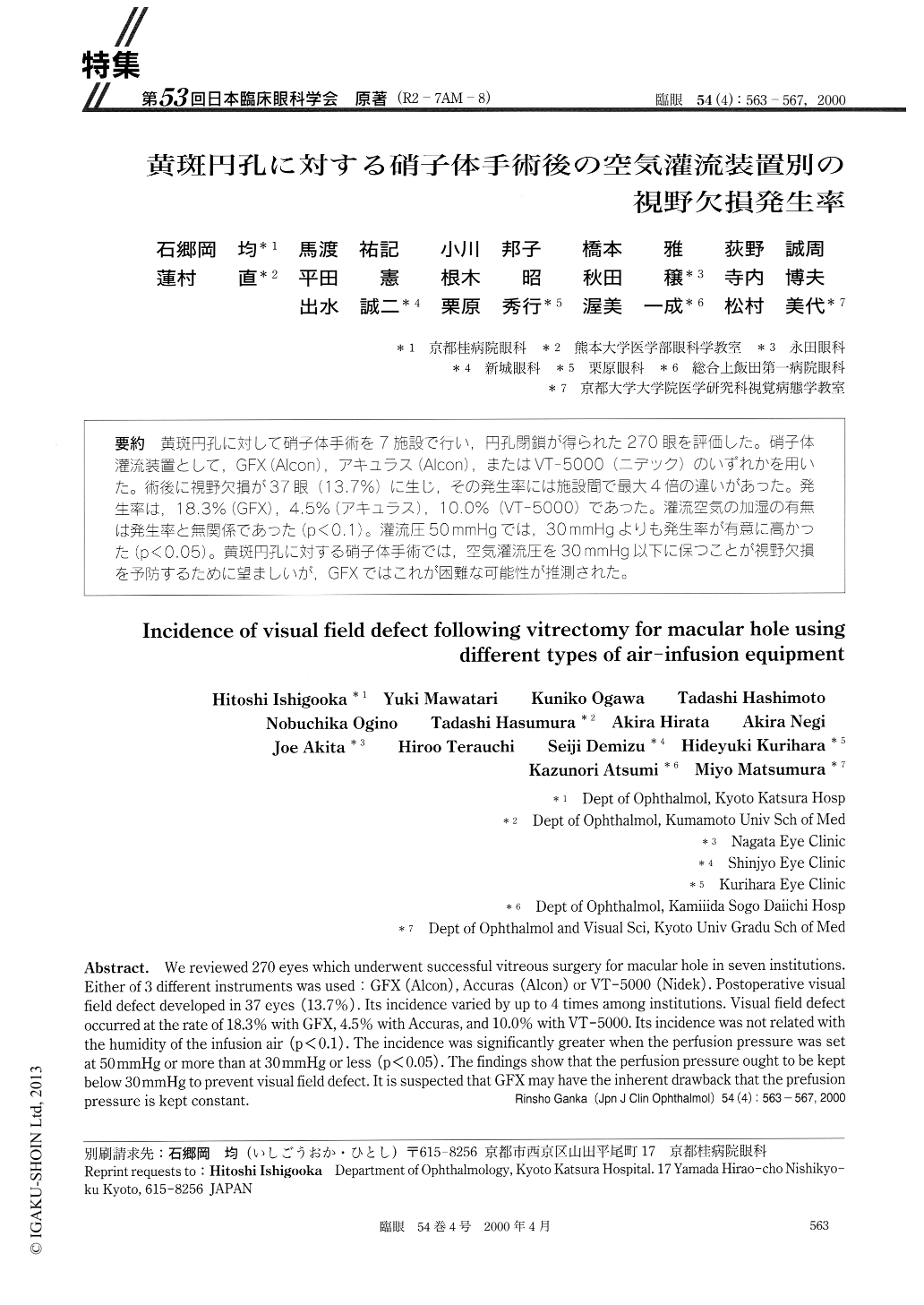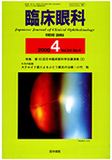Japanese
English
- 有料閲覧
- Abstract 文献概要
- 1ページ目 Look Inside
(R2-7AM-8) 黄斑円孔に対して硝子体手術を7施設で行い,円孔閉鎖が得られた270眼を評価した。硝子体灌流装置として,GFX (Alcon),アキュラス(Alcon),またはVT-5000(ニデック)のいずれかを用いた。術後に視野欠損が37眼(13.7%)に生じ,その発生率には施設間で最大4倍の違いがあった。発生率は,18.3%(GFX)14.5%(アキュラス),10.0%(VT-5000)であった。灌流空気の加湿の有無は発生率と無関係であった(p<0.1)。灌流圧50mmHgでは,30mmHgよりも発生率が有意に高かった(p<0.05)。黄斑円孔に対する硝子体手術では,空気灌流圧を30mmHg以下に保つことが視野欠損を予防するために望ましいが,GFXではこれが困難な可能性が推測された。
We reviewed 270 eyes which underwent successful vitreous surgery for macular hole in seven institutions. Either of 3 different instruments was used : GFX (Alcon), Accuras (Alcon) or VT-5000 (Nidek) . Postoperative visual field defect developed in 37 eyes (13.7%) . Its incidence varied by up to 4 times among institutions. Visual field defect occurred at the rate of 18.3% with GFX, 4.5% with Accuras, and 10.0% with VT-5000. Its incidence was not related with the humidity of the infusion air (p < 0.1) . The incidence was significantly greater when the perfusion pressure was set at 50 mmHg or more than at 30 mmHg or less (p < 0.05) . The findings show that the perfusion pressure ought to be kept below 30 mmHg to prevent visual field defect. It is suspected that GFX may have the inherent drawback that the prefusion pressure is kept constant.

Copyright © 2000, Igaku-Shoin Ltd. All rights reserved.


